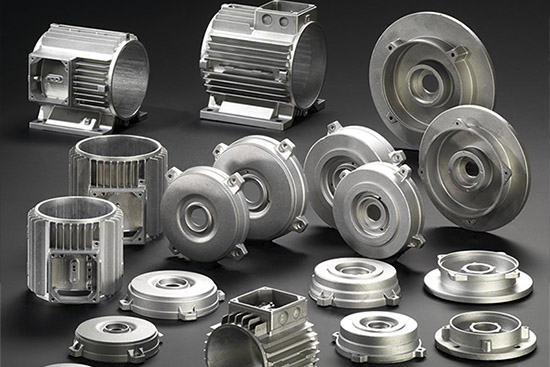The Intricate World of Diecasting: Precision in Manufacturing
The Intricate World of Diecasting: Precision in Manufacturing
Blog Article
Diecasting is one of the most important processes in modern manufacturing, playing an important part in the production of complex metal parts with precision and efficiency. This process is the practice of forcing the molten metal with high pressure into a mold cavity, resulting in parts that boast exceptional dimensional accuracy and high surface finishes. In the midst of a rapid growth in industries, and as the demand for high-quality components grows, diecasting is continuing to show its merits, particularly in sectors requiring the mass production of complicated parts. This article explores the process of diecasting along with its pros and cons, various material options, as well as its numerous applications across various sectors.
The core of diecasting is the mold. It's also known as a die, which carefully crafted out of toughened steel in order to stand up to the harsh conditions that are encountered during this casting. The design of the die is crucial, as it must accommodate the molten metal's flow and hardening while making sure that the tolerances are tight to assure precision. During the diecasting process the metals like aluminum, zinc, magnesium, and copper are heated till they get molten. This molten steel is introduced into the die chamber under pressure that is high, filling every crevice and crevice of the mold. Rapid cooling and solidification of the metal result in components that have excellent dimensional accuracy and a smooth surface finish, often making it unnecessary to perform additional manufacturing or finishing.
One of the significant advantages that diecasting has is its capability to create parts that have high precision in dimensional measurement and smooth surface surfaces. The high-pressure injection ensures that the molten material is perfectly shaped in the mold which results in components that need minimal in terms of machining or finish. This precision is especially beneficial when it comes to creating complex geometries or thin-walled sections that would be difficult or impossible to attain with other manufacturing methods. Diecasting also produces pieces with tight tolerances as well as great repeatability. It is an ideal method for mass production. Diecasting's efficiency is also a source of cost savings because the higher productivity rates cut down on labor and waste material.
Diecasting's versatility is apparent in its extensive usage across different industries. In the automotive industry such as the automotive industry diecast parts play a major role in the manufacturing of engine components, transmission housings, and various other parts of structural design. The components are benefited by the durability and strength offered through diecasting as well for the capacity to manufacture lightweight parts that improve performance of the engine. in the aerospace field, the need for high-strength and lightweight parts is essential and diecasting offers the high-quality and durability necessary for the most demanding of applications. Consumer electronics depend upon diecasting for the production of durable and precise housings and internal components that ensure quality and durability of gadgets. The medical, telecommunications, as well as power tools industry demonstrate the wide-ranging application and the importance of diecasting the modern world of manufacturing. To get more details please straight from the source
Diecasting's capabilities go beyond its mechanical capabilities to its adaptability in various application. In the realm of electronics, it is employed in the manufacture of enclosures heat sinks, connectors, and enclosures, ensuring that devices are protected and function efficiently. This process is utilized in manufacturing everyday goods, from the kitchen appliance and power tools, for which the quality and reliability are crucial. Its ability to make intricate and intricate parts allows diecasting to be a viable option for engineers and designers who want to develop new products and enhance their performance. With the ability to accommodate a wide range of metals and allowing for the integration of sophisticated features that diecasting allows the design of high-end products that span multiple fields.
Diecasting is a vital manufacturing technique that blends precision, efficiency, and versatility. Its capability to make complex, high-quality components with outstanding mechanical properties make it essential in numerous industries. Diecasting's effectiveness in mass production, along with its material and price benefits, highlights its importance in the modern world of manufacturing. As the demand for high-performance and reliable components continues to rise, diecasting will be an essential technology that drives advancement and helping in the creation of high-end products that can meet the ever-changing demands of the market. Through its continued expansion and development, diecasting exemplifies the combination of engineering expertise and manufacturing expertise, solidifying its role in the future of industrial production.